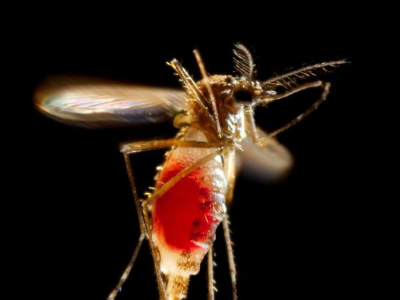Jun 9, 2006 (CIDRAP News) Federal officials announced this week that about $1.22 billion will be made available to states and territories this year to prepare for bioterrorism and other public health emergencies, down from about $1.33 billion last year.
The money includes $766 million administered by the Centers for Disease Control and Prevention (CDC) and $450 million handled by the Health Resources and Services Administration (HRSA), both part of the Department of Health and Human Services (HHS).
For comparison, the corresponding amounts announced last year were about $863 million in CDC grants and $471 million in HRSA grants. This year's allocation is the fifth in a series of large federal outlays for public health preparedness that began in 2002.
The CDC grants are to be used to develop "emergency-ready public health departments by upgrading, improving, and sustaining their preparedness and response capabilities for 'all-hazards' public health emergencies," HHS said in a news release.
The HRSA money is intended to help states increase their medical surge capacity and ability to handle "mass casualty" events, according to HHS. This includes increasing hospital beds, providing more isolation rooms, finding more healthcare workers, setting up hospital-based medication caches, and providing for mental health services, trauma and burn care, communications, and personal protective equipment.
The goals of the two funding programs also include improving infectious disease surveillance and strengthening connections between hospitals and state and local health departments to enhance disease reporting, according to HHS.
The combined CDC-HRSA state allocations range from $6.14 million for Wyoming to $91.86 million for California. For the CDC funds, each state receives a base grant of $3.91 million plus an additional amount in proportion to population, CDC spokesman Von Roebuck in Atlanta told CIDRAP News.
Four urban areasLos Angeles County, Chicago, New York City, and Washington, DCare allotted separate base grants of $5 million, plus population-based amounts. Their allocations range from $8.5 million for Washington to $38.9 million for Los Angeles.
The CDC awards include funds to help cities equip themselves to quickly provide preventive drugs to masses of people in an emergency. The number of cities included in this 2-year-old program, called the Cities Readiness Initiative (CRI), is being doubled this year, from 36 to 72, according to HHS. The CRI money this year totals about $55 million, according to Roebuck. Last year the amount was about $40 million.
The CRI program involves "enhancing each city's dispensing plans with trained staff and developing and testing plans that include alternative means of delivery," the HHS announcement says. "Known as mass prophylaxis, this effort is considered the top public health priority identified in the National Preparedness Goal." The money can't be used to buy drugs, which would come from the national emergency stockpile, said Roebuck.
With this year's funding, the CDC is also continuing a 2-year-old program to bolster infectious disease surveillance in states bordering Canada and Mexico, according to HHS. The amount allocated for the Early Warning Infectious Disease Surveillance program, as it is called, is $5.44 million, the same as last year.
To qualify for CDC grants, jurisdictions must file applications by Jul 15, according to the agency's guidance document for the program. They will be notified of awards by the end of August, the document says.
The deadline for applying for HRSA grants is Jul 1, according to HRSA spokesman David Bowman. Grants are to be awarded by Sep 1.
The CDC boasted of significant progress in bioterrorism preparedness in a bulletin posted last month on the agency Web site. The report cites the following improvements, to name a few:
- The number of biosafety level 3 laboratories increased from 69 in 2001 to 139 in 2005.
- All states now have detailed public health response plans, and 94% of states report they have exercised their response plan in the past year.
- All states report they have plans in place for receiving and distributing drugs and supplies from the Strategic National Stockpile, and 98% say they have designated facilities for those tasks.
- All states report having "24/7/365" capacity to investigate urgent disease reports.
See also:
CDC guidance document for jurisdictions applying for preparedness grants
http://www.bt.cdc.gov/planning/coopagreement/pdf/fy06announcement.pdf
May 23, 2005, CIDRAP News story "New federal bioterrorism funds tied to specific goals"
CDC fact sheet "CDC Makes Preparedness a Priority"
http://www.cdc.gov/media/pressrel/fs060519.htm


















